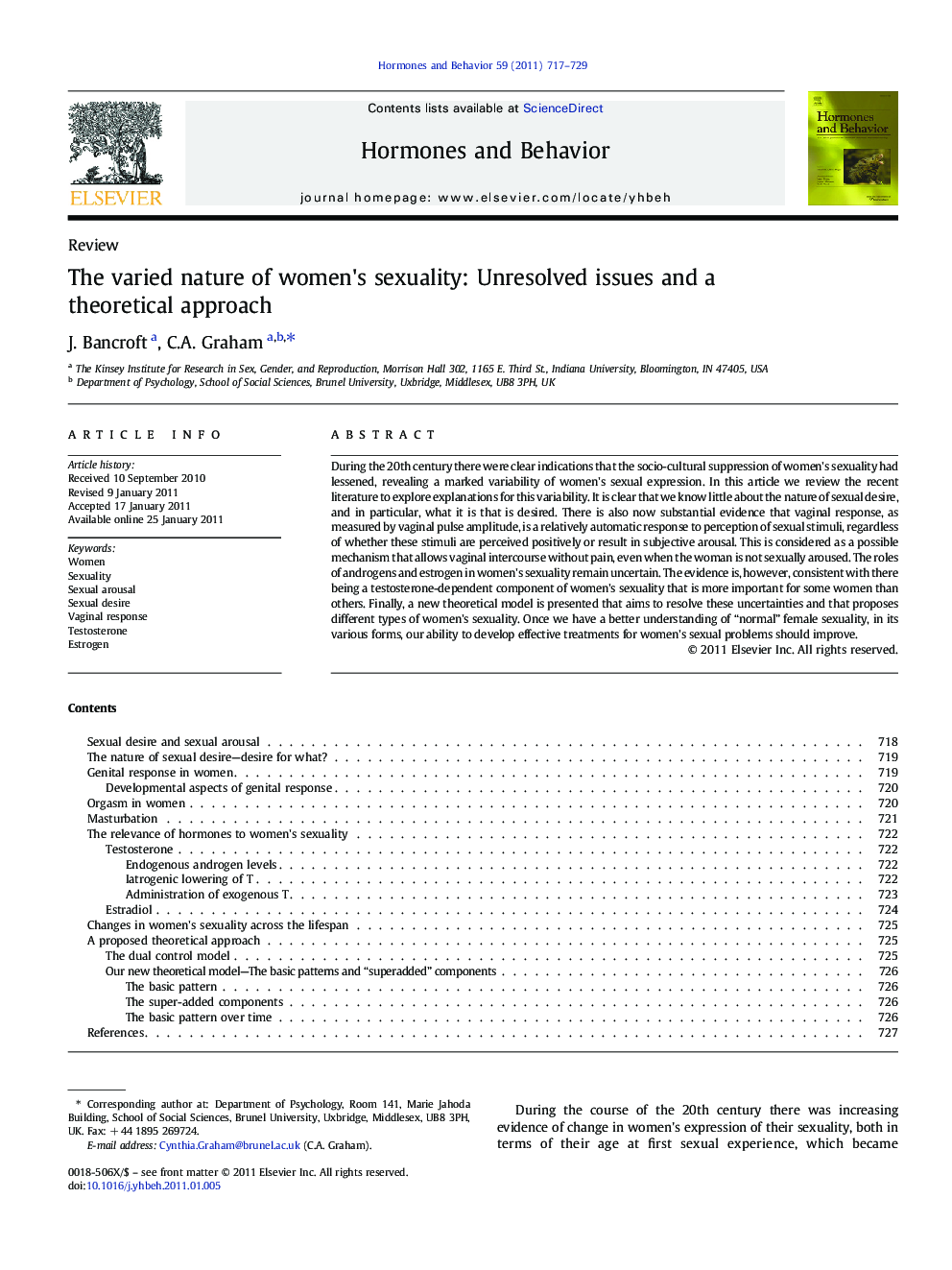| Article ID | Journal | Published Year | Pages | File Type |
|---|---|---|---|---|
| 322803 | Hormones and Behavior | 2011 | 13 Pages |
During the 20th century there were clear indications that the socio-cultural suppression of women's sexuality had lessened, revealing a marked variability of women's sexual expression. In this article we review the recent literature to explore explanations for this variability. It is clear that we know little about the nature of sexual desire, and in particular, what it is that is desired. There is also now substantial evidence that vaginal response, as measured by vaginal pulse amplitude, is a relatively automatic response to perception of sexual stimuli, regardless of whether these stimuli are perceived positively or result in subjective arousal. This is considered as a possible mechanism that allows vaginal intercourse without pain, even when the woman is not sexually aroused. The roles of androgens and estrogen in women's sexuality remain uncertain. The evidence is, however, consistent with there being a testosterone-dependent component of women's sexuality that is more important for some women than others. Finally, a new theoretical model is presented that aims to resolve these uncertainties and that proposes different types of women's sexuality. Once we have a better understanding of “normal” female sexuality, in its various forms, our ability to develop effective treatments for women's sexual problems should improve.
Research Highlights► To review literature on the variability of women's sexuality. ► To explore the variable nature of women's sexual desire. ► To consider the role of "automatic" vaginal response to sexual stimuli. ► To consider explanations for variable orgasmic potential in women. ► To propose a theoretical model which may help us understand the variability of women's sexuality.
